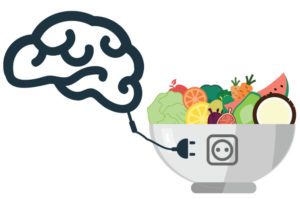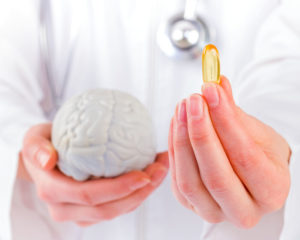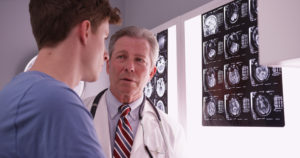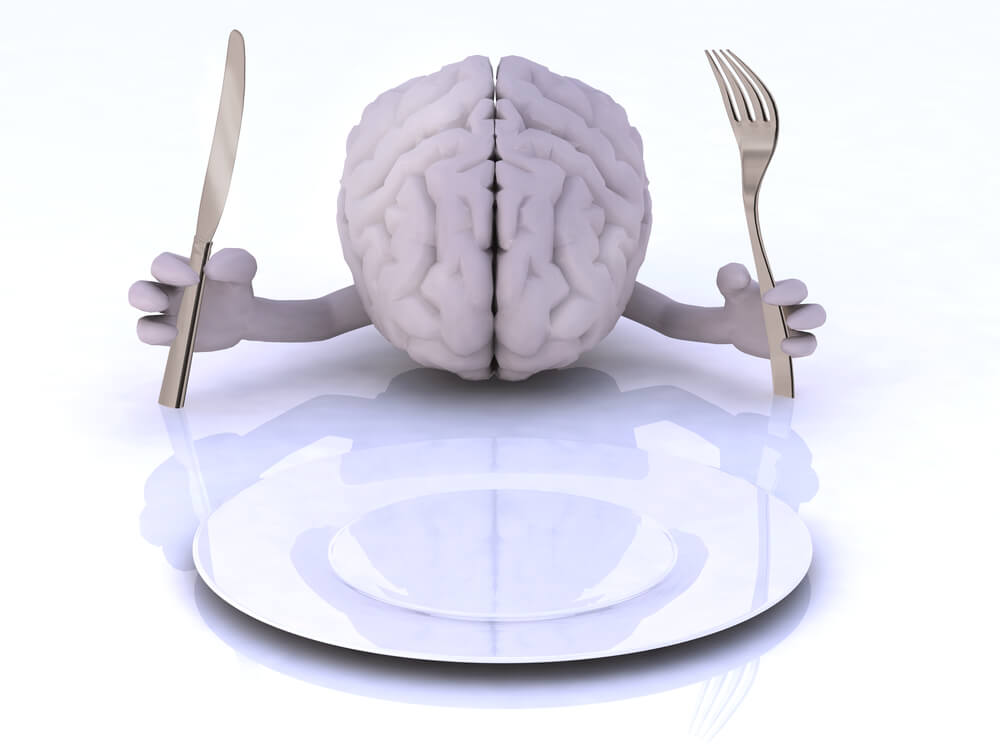 |
Dr. David Musnick, MD Functional Medicine Doctor Sport Medicine & Orthopedics |
Food List | Smoothie Recipe | Supplements | Pathophysiology
The brain injury diet is designed to decrease the inflammation in the brain and body after a head injury. It also provides key nutrients needed to support the healing process.
Often overlooked in the conventional approach to mild traumatic brain injury (mTBI) and concussions, diet plays a key role in the healing process especially in the first 8-10 weeks, which is known as the critical period after a head injury. You can still benefit from the diet after that period as well.
A diet for brain injury recovery involves the elimination of foods that prevent healing and the addition of foods to support the body to heal naturally. The basic principles of the diet are:
- Eliminate foods known to cause inflammation or that contain toxins that disrupt the healing process of the body and brain
- Eat foods that are high is phytochemicals, flavonoids and other nutrients shown to reduce inflammation, support the repair process and promote brain health
- Use personalized dietary supplements to further support the healing process of the brain.
While it is important to tailor the diet to each patient’s unique needs, here are the main principles of the brain injury diet:
Foods to Avoid
- Dairy & Gluten
These may cause an autoimmune response after the head injury, where the immune system mistakenly attacks the blood brain barrier (BBB) and brain tissues making the injury worse. Dairy products include anything made from cow’s milk. Gluten is the protein found in wheat, barley, and rye. - Browned animal proteins, fried foods, coffee, crackers and chips
These foods contain a neurotoxin called acrylamide, that can exacerbate brain injury. Processed snacks like chips and crackers can trigger the formation of AGEs (Advanced glycation end products) that may damage the blood brain barrier. - Chocolate, shellfish and large fish
These foods may contain toxic heavy metals like mercury and lead, which are neurotoxins. - MSG & Aspartame
Can lead to excitotoxicity, a pathological process where neurons are damaged and die off due to the over-activation of certain receptors. - Processed foods such as fried foods, breaded foods and trans fats
These foods increase inflammation in the body. - Foods high in sugar
Sugar contributes to excessive inflammation in the body.
Foods to Eat
Try to eat organic as much as possible to limit neurotoxins, pesticides, and GMOs.
The list of foods to eat while on the brain injury diet may vary from one patient to another in order to support the individual’s needs. With that said, here are some of the key foods I often recommend as a part of the brain injury diet due to specific brain healing nutrients in them:
- Wild blueberries:
Anthocyanins, the purple pigment in wild blueberries, can help to heal the blood-brain barrier. It is also shown to have neuroprotective and antioxidant effects in the brain that may help with oxidative stress.
Blueberries have been extensively studied for their role in slowing neurodegeneration. Wild blueberries are the highest in anthocyanins. Additional fruits that are high in anthocyanins: black and red raspberries, blackberries, blackcurrants, and acai. - Celery, parsley & radicchio lettuce:
Rich in anti-inflammatory flavonoids, especially apigenin (celery & parsley) and luteolin (radicchio lettuce). - Nrf2 activator foods:
Green tea, turmeric, broccoli and broccoli sprouts are all sources of Nrf2 activators.
The Nrf2 gene plays a key role in the body’s antioxidant stress response, which can help to reduce the oxidative stress and free radical damage as a result of the head injury. - Foods high in choline:
Eggs, chicken, turkey, collard greens, Brussel’s sprouts, broccoli, Swiss chard, cauliflower, and asparagus are all good sources of choline. Choline is needed to produce the neurotransmitter acetylcholine that plays a key role in memory and other brain functions. - Watercress & microgreens:
The nutrients and fiber in green leafy vegetables help the body and the brain naturally detoxify.
Brain Smoothie to Decrease Neural Inflammation
 A practical easy way to get many of these brain healing nutrients is to make a brain-health smoothie. I have found that many of my patients, adults and kids alike enjoy getting their nutrition this way because it also tastes good.
A practical easy way to get many of these brain healing nutrients is to make a brain-health smoothie. I have found that many of my patients, adults and kids alike enjoy getting their nutrition this way because it also tastes good.
Here is an example of a quick recipe you can have twice a day, adapt it to your personal needs and taste:
- ¼ to ⅓ cup of wild frozen blueberries
- 8 to 10 ounces of organic pomegranate or cranberry juice
- Anti-inflammatory flavonoids veggies: radicchio lettuce, celery and parsley
- 20-25 grams of an organic vegan protein powder (such as hemp or pea protein).
Additional options:
- 5 grams of l-leucine within 30 min after resistance training to help prevent muscle loss.
Depending on the leucine content in your protein powder, you may want to take extra leucine supplement, so you get a total of 2.5 grams of leucine. - Watercress or microgreens to support detoxification
- Half of a banana for taste and consistency
- Clove (rich in flavonoids) if you can tolerate or like the taste
- Cardamom and cinnamon are healthy options that can help balancing the clove taste.
My Top 3 Recommendations for Brain Injury Supplements
 Certain supplements can also help to reduce inflammation in the body and the brain. While there may be different supplements that might be recommended for a patient based on their personal needs, there are three I would normally recommend taking after a head injury:
Certain supplements can also help to reduce inflammation in the body and the brain. While there may be different supplements that might be recommended for a patient based on their personal needs, there are three I would normally recommend taking after a head injury:
- Longvida Curcumin:
A form of curcumin that can cross the blood brain barrier, and may help decreasing inflammation in the brain and activating Nrf2 - Taurine:
An amino acid that is extremely helpful during all stages of a head injury including providing protection against excitotoxicity - DHA Omega 3 (2-6 grams a day):
An essential fatty acid well known for its anti-inflammatory, anti-apoptotic and Nrf2 activation properties. Ideally, you should start a few days from the head injury and continue throughout the entire plan.
The Functional Medicine Approach to mTBI
The pathophysiology of a head injury
 It is important to mention that after any kind of head injury, the entire pathophysiology of the brain should be assessed. In other words, what is happening in the brain as a result of the injury, and more specifically, identify and treat the areas of the brain that are affected. This is often overlooked in the conventional approach and may lead to untreated secondary brain damage.
It is important to mention that after any kind of head injury, the entire pathophysiology of the brain should be assessed. In other words, what is happening in the brain as a result of the injury, and more specifically, identify and treat the areas of the brain that are affected. This is often overlooked in the conventional approach and may lead to untreated secondary brain damage.
After years of treating head injuries and observing the deficiencies of the conventional method, I developed a functional medicine approach that addresses the pathophysiology of the brain injury by using neuroprotection treatment strategies and lifestyle changes to improve brain health.
To learn more, see: Functional Medicine Approach To mTBI.

